The 8 best resistance bands for strengthening, stretching, and doing Pilates at home in 2025, tested by us
I've been busy working out with the best resistance bands to create this round-up for those who want a different way to exercise or stretch at home or the gym
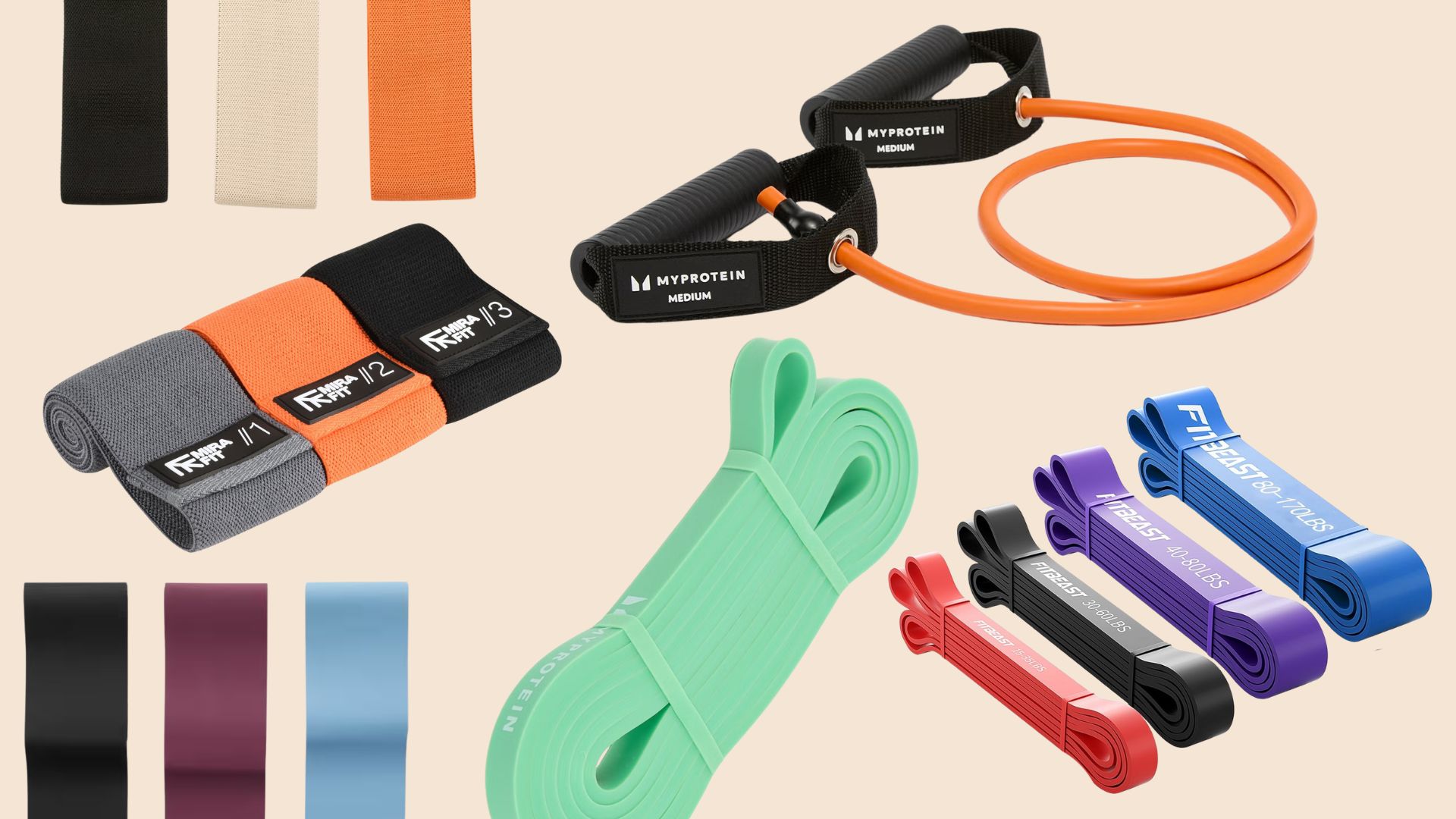

A pick of the best resistance bands can be all you need to strengthen your entire body or it can be a handy accessory for stretching and mobility routines. There's not a lot these strong rubber bands can't do.
That being said, not all resistance bands are made equal. While you can choose the best dumbbells or the best kettlebells based on a couple of key criteria, there are so many different types of resistance bands. Choosing the one that works the workout you have in mind is important. Some are made of thin, long and stretchy rubber, others are thicker, shorter, and covered in nylon. Some even have handles.
Each has its uses, and as woman&home's digital health editor, fitness instructor, and someone who's used these bands for over five years in home workouts, I'm very familiar with what makes a good one. So, I've pulled together a range from top retailers like MiraFit, Myprotein, Amazon, Decathlon, and more to assess which are worth having in your collection.
The best resistance bands, tried and tested by us
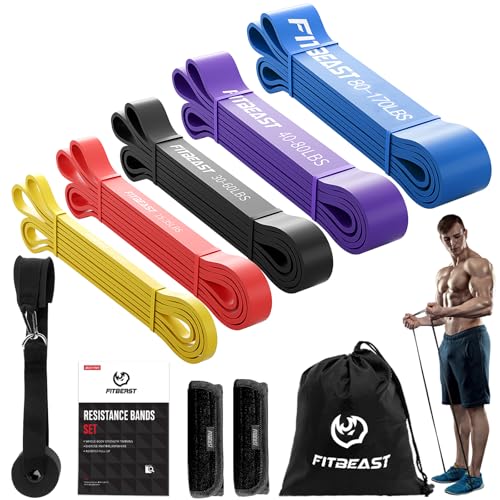
Out of all the resistance bands I tried, the Fitbeast set was the only one that covered all the bases, making it the best overall for a full-body resistance band workout at home - or for taking to the gym, if yours doesn't have some already.
The design of these bands was stand-out for me. They feel very premium in material, sturdy, and unlikely to snap or fray with regular use. I've had mine for about six months now, using them every other day, and they look almost as good as new. While I've never found an issue with gripping the bands, given they are made from high-quality latex, the pack comes with two grip handles, making them more comfortable. The Fitbeast Resistance Bands Set also comes in a small carry bag, which is bulky when all the bands are inside but makes storage easy.
For me, these were the top choice for home workouts because they also come with a door jam. This small nylon piece of kit can hold the band securely to your doorframe by sandwiching it between the frame and door, making exercises like lat pull-downs (which are normally hard to do with resistance bands) very easy.
For
- Premium materials
- Comes with useful accessories
- Storage bag included
Against
- Bulky to store
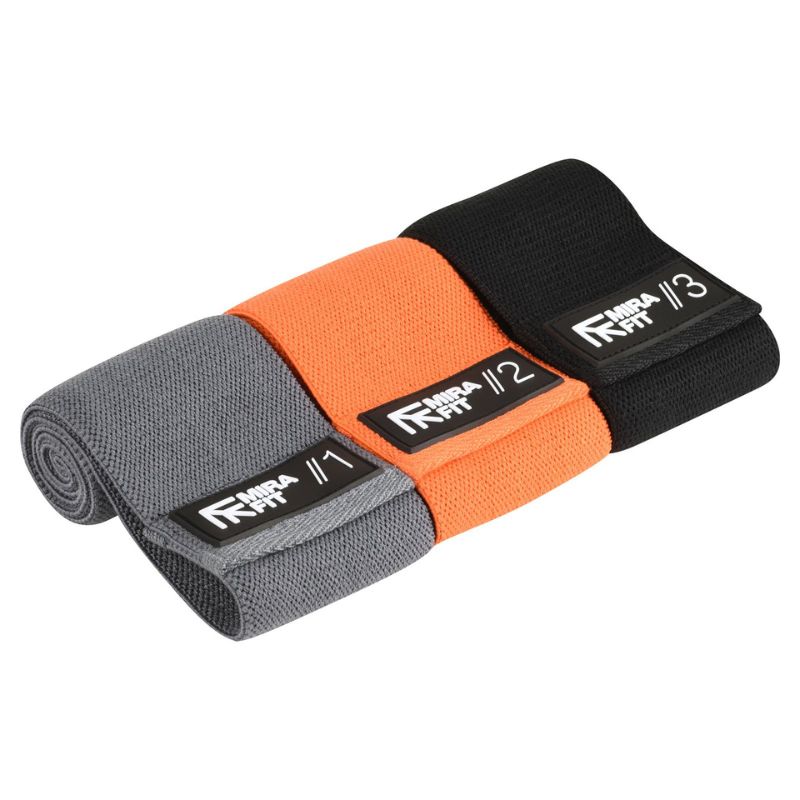
For lower-body work, many people like using the so-called 'booty' bands. These bands sit just above the knee and are perfect for squats, glute bridges, lunges, and crab walks and so on, where you have the band wrapped around your legs. The Mirafit Fabric Resistance Bands Set ticks all the boxes - they feel strong and premium out of the bag, they get the job done, are easy to move over the legs even when you're wearing leggings, and are much more budget-friendly than similar options. At under £20, these thick bands are a steal - you'll find many for £30 and above.
The smell of these bands was another thing I noticed - or I should say, the lack of smell. Some latex resistance bands, especially when new, leave a distinct plastic smell on your hands and in the air, which does fade with time. I didn't have the same problem with these. And, as they are much thicker than others, they don't resume their folded position even after you've had them packed away in the bag for a while.
However, you'll need to pair your Mirafit Fabric Resistance Bands Set with our top pick for upper-body work for a full-body workout. The thickness means they have a limited movement range, which makes them ideal for a resistance band leg workout - but not upper-body, where you'll need a little more stretch in your band.
For
- Budget-friendly compared to others
- Various resistances to choose from
- Storage bag included
- Premium materials
Against
- Only suitable for lower-body exercises
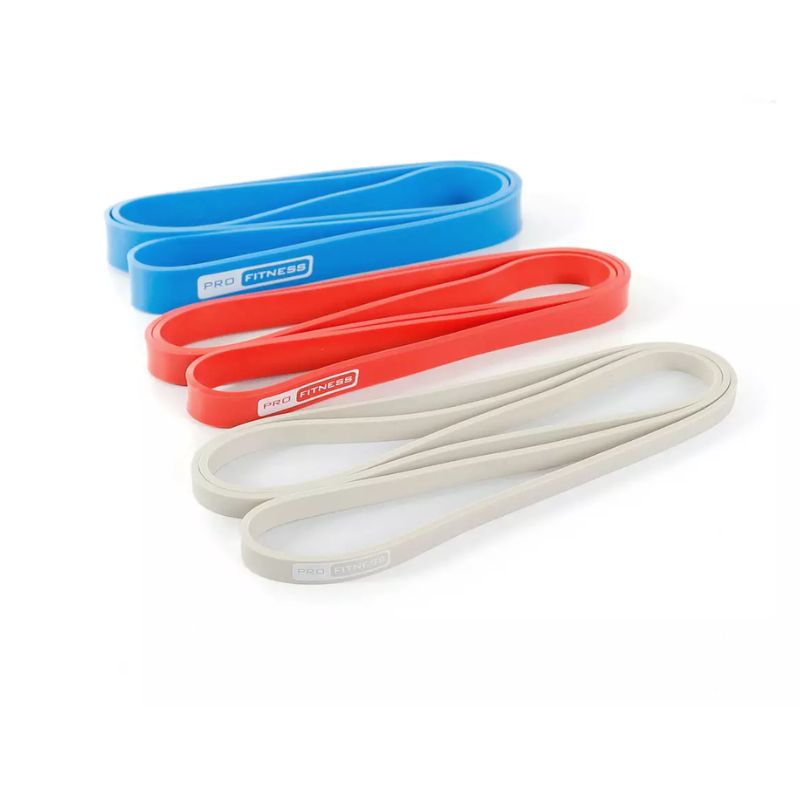
For me, the key requirement for a good set of upper-body workout bands is stretch. Can I stretch them above my head with the band secured under my foot? If so, they are a contender for one of the best resistance bands. The Pro Fitness Resistance Bands scored the top spot for me in the end as there's a choice of three resistances and the bands are longer than ones like the Fitness Mad Mini Power Loops, for example, so they stretch easily above the head.
I used these bands for shoulder presses, shoulder raises, bicep curls, tricep extensions, and more upper-body resistance band workouts on workout apps. They feel very secure and won't be prone to snapping during use, as they're thicker than other longer bands. They are also versatile - you can easily loop the bands around your hands to adjust the length and find a more secure grip.
One note would be that the colour is a lot darker in 'real life' compared to the product images, with the red more of a burgundy. This shouldn't dissuade or persuade you towards these resistance bands over others, but it's worth considering.
For
- Very stretchy
- Super versatile
- Various resistances to choose from
- Multipack saving compared to other options
Against
- No storage bag
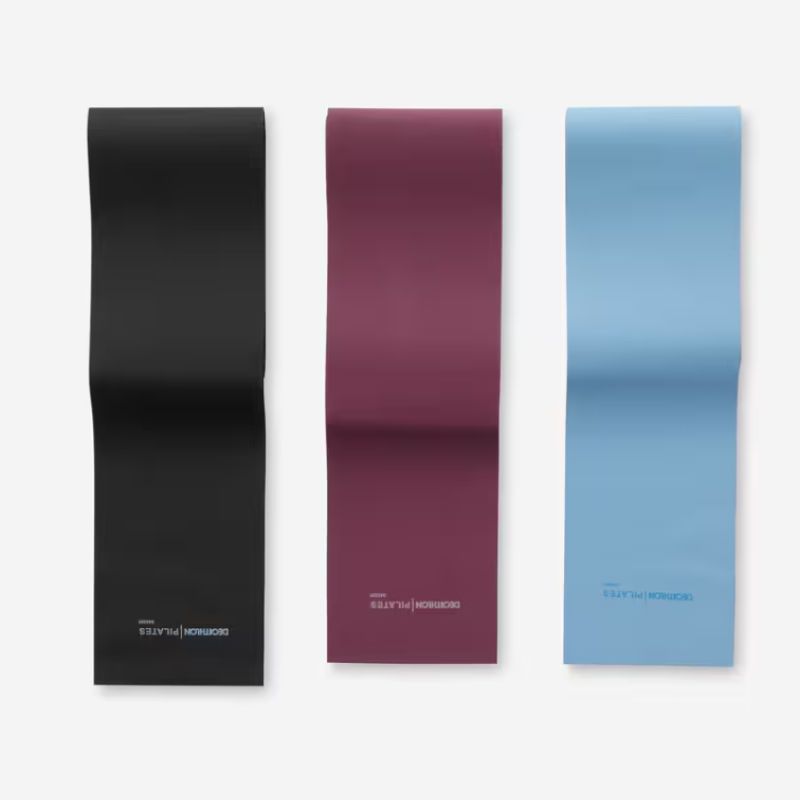
You don't need weights to do a weighted Pilates workout - resistance bands work just fine too. This set from Decathlon, which I tried using workouts from various Pilates apps, came up top thanks to the range of resistances (2 to 4kg), unique colours, and premium design.
While I've used the 4kg in a couple of workouts, I mainly use the lighter resistances, but I'm happy to have a choice and as my Pilates prowess progresses, I'm sure I'll need it. This also makes the set a good one for beginners.
The standout feature is the design though - unlike any other band on the list, these have a textured underside, making them comfortable and more secure for longer holds on the mat as they don't slide away, even when you're using the bands against your skin.
They are also compact and weigh almost nothing, so it's no trouble to take them to class or on holiday with you.
For
- Sleek colours
- Range of resistance options
- Grippy material
- Great for beginners
Against
- More expensive compared to similar options
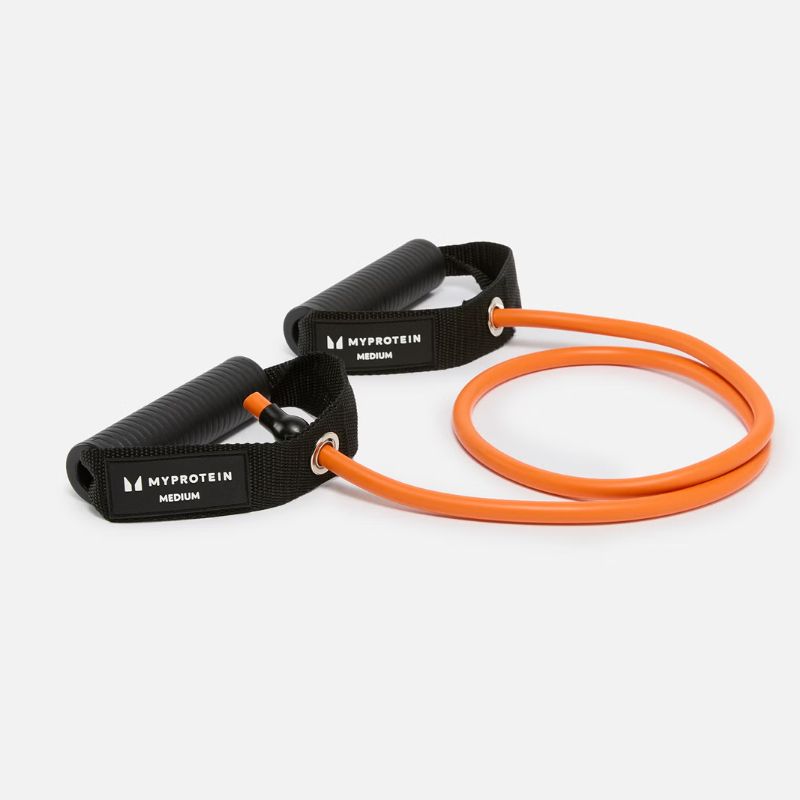
Available in light, medium (which is the one I tried), heavy, and extra-heavy, this simple band ticks the boxes for comfort, quality, and ease of use. I tested it with full-body exercises like bicep curls, shoulder raises, rows, squats, and shoulder presses.
Stepping on the band to keep it stable, the resistance felt strong and I had all the confidence that the material would stand up to being stretched to the limit. The band itself feels premium and well-made. The handles are ribbed for a better grip and move with you, making for a comfortable experience in any full-body workout.
I would recommend buying more than one though. The medium resistance was perfect for my bicep curls but I'd switch to a lighter resistance for shoulder raises and a heavier one for rows. For the shoulder press, the band was stretched to its limit, so I'd switch to the ProFitness Resistance Bands for this exercise. However, I am taller than most women. If you're 5'6 or under, you'll be fine with this one. You can also buy the complete set, which ranges from extra light resistance (which you can't buy individually) to extra-heavy with additional handles from Myprotein's website, which may work out more cost-effectively.
For
- Range of resistances available
- Feels very sturdy
- Intuitive design
- Very versatile
Against
- Bulky to store
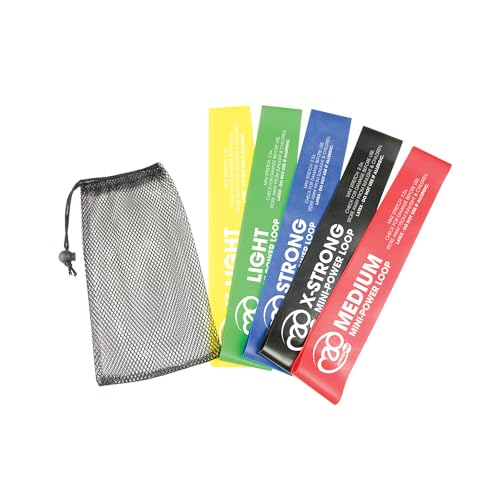
If you're looking to take your workout abroad, a small set of resistance bands can be your best friend. While the Myprotein Resistance Band with Handles or the ProFitness Resistance Bands are great options for home workouts, Fitness Mad Mini Power Loops from Amazon are just the right size to pack away in your suitcase. The bag only measures 18cm in length when full and weighs just 156g. It can also be squashed down to make more space as the bands are thin compared to other bands on this list.
For me, this one made the top pick for variety, affordability, and ease of use. There are five bands, ranging from light to extra-heavy resistance. I'd say they are best suited for exercises like banded deadlifts, squats, glute bridges, lunges, bicep curls, and rows - so almost a full-body workout. In testing, I found the only exercises they weren't suitable for were overhead ones where you need to secure the band under your foot as they don't quite stretch that long. For this, I'd recommend pairing this £12 pack with the BodyMax Resistance Band, our top pick for upper-body strengthening.
For
- Very compact
- Range of resistance options
- Storage bag included
- Durable
Against
- Not suitable for stretching above your head
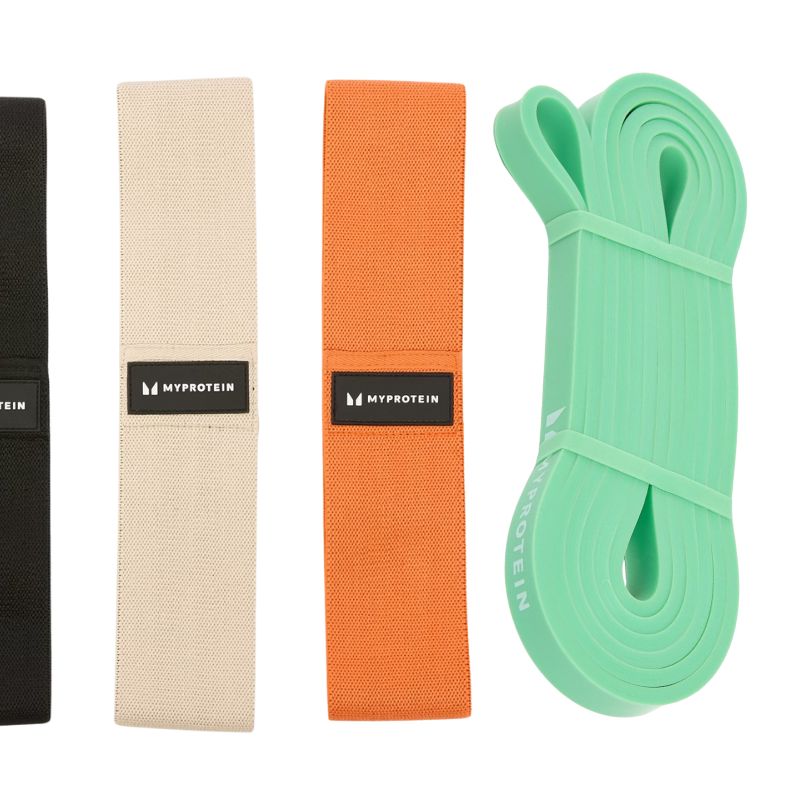
For beginners, I firstly recommend buying a set of shorter resistance bands (like the Mirafit Fabric Resistance Bands Set) and a longer set (like the ProFitness Resistance Bands). Together, you have everything you need to get started with strength training at home.
However, as these products come from different retailers, you might like to save on postage and buy from the same retailer. In that case, I can recommend the Myprotein Booty bands, which I also rated very highly (but they missed the top spot as they are more expensive) after using them for squats and lunges in my home workouts, and the Myprotein Resistance Band, 2 to 16kg. Having one band you can adjust the resistance simply by folding and shortening the length is a great idea. It's also the perfect starting resistance for beginners.
If you're new to strength training, you'll need bands that can support your current strength level and help you get stronger. When your strength has improved, you'll need bands with a heavier resistance to keep the progress going. These are my top picks together as both products offer a range of resistances.
For
- All you need to get started as a beginner
- Cheaper than other weights at under £50 for both
- Storage bag included
- Very versatile
- Range of resistance options
Against
- Products must be bought separately
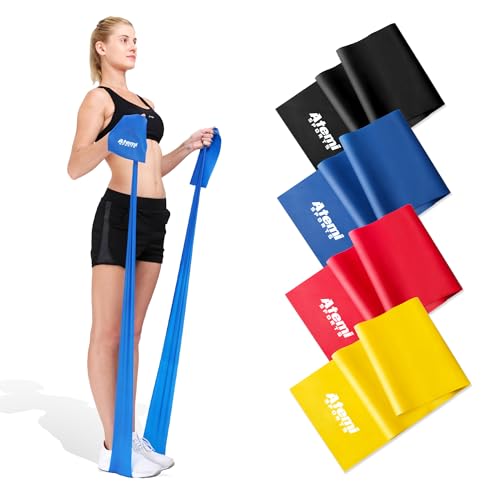
Most resistance bands without handles (and excluding the thick nylon Mirafit bands) on this list will be suitable for stretching. But, I found the Atemi Sports Exercise Bands to be the pick of the bunch as they are made from a thinner latex material that stretches wider, offering a more gentle, controlled resistance. With these, I found I could get deeper into my stretches without slipping accidentally into strength work by putting strain on my muscles, as I might with a thicker rubber band.
There needs to be a range of resistance options to meet you where your flexibility is at right now and allow you to progress further. The fact these come in a range of four resistances ticks this box. I also found the BodyMax V2 PowerBand red band to be a good choice all-rounder for lower-body stretching - but it's sold out online.
I tried the Atemi Sports Exercise Bands out during sessions with various stretching apps and found I needed all four resistances, as my upper body is more flexible than my hamstrings, so I used the lighter one for my chest and arms and heaviest one for my legs and glutes. They feel secure during use - but they are more likely to wear and tear sooner, thanks to the thinner materials. They also don't have the loop design of a classic resistance band, making them slightly harder to hold.
For
- Perfect for stretching
- Great range of resistances
- Storage bag included
- More affordable than others on the list
Against
- May be prone to quicker wear and tear
How we tested the best resistance bands
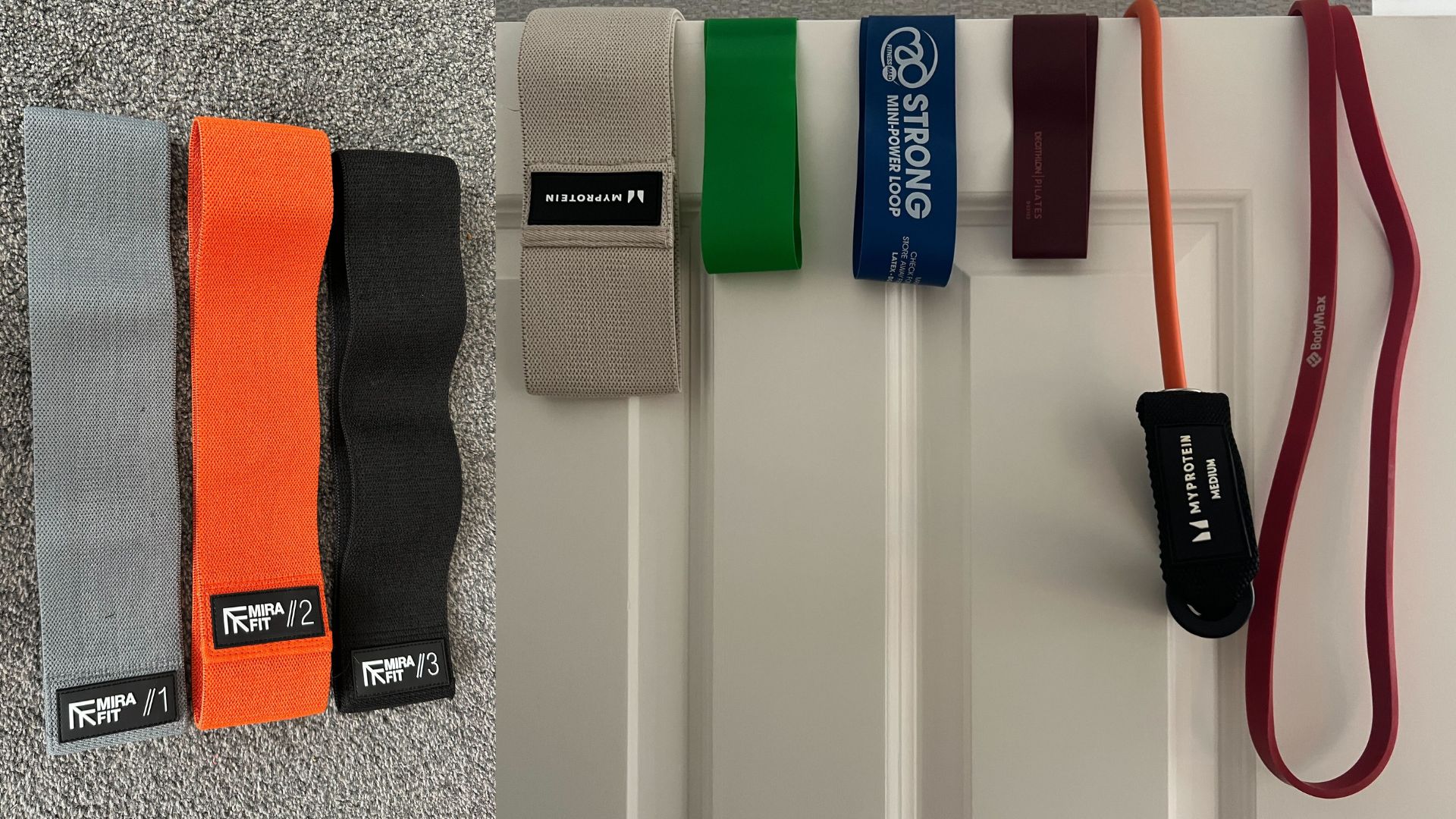
I tested each resistance band for multiple workouts across two weeks, but I've had some of them for over six months.
I tried each resistance band in this guide - and a few more that didn't stand up to my rigorous testing process - across a range of workouts and stretching sessions, using some of the best workout apps like Les Mills and Apple Fitness+.
The way I used the resistance band depended on the type. I used bands with handles, classic loop resistance bands, and thicker 'booty' bands in five full-body strength training sessions over two weeks. I also did several workouts with individual lower-body and upper-body focuses. I used the thinner stretching bands for my warm-ups and cool downs before each of these sessions, and in testing Pilates-specific resistance bands, I did two complete full-body Pilates workouts.
Each of the bands was assessed based on a few key factors:
- Comfort: In any workout, it's key to have equipment that is comfortable to use, otherwise you're unlikely to want to use it, making it a waste of money.
- Versatility: The key benefit of resistance bands is that they can be used for strength training, Pilates, stretching, or cardio, and so on, so I made sure to test the bands across many workout types to make sure they could be suitable for all.
- Adjustable: Aside from the thicker nylon bands for lower-body workouts, resistance bands should be fully adjustable. Being able to fold a band over, add more tension through the anchor (e.g. underfoot), or loop it around the wrist is a good sign that you can increase the resistance without having to swap to the next weight up, which can help you get stronger little by little.
- Quality: A low-quality resistance band will snap or show more signs of wear and tear than one made from high-quality materials like premium silicone and rubber. I made sure each of the bands was built to last.
- Price: In weighing up resistance bands vs weights, price often comes to mind. One key benefit of the best resistance bands is that they cost a lot less than dumbbells or kettlebells, making them a suitable option for those on a budget. I made sure I considered a range of bands from across the price spectrum, from as little as £3 to as much as £50.
- Storage: When deciding on the best resistance bands, storage was the final factor I considered. I didn't want to only put bands that could be packed away neatly into a tiny bag - as sometimes you need a band with a bit more bulk - but I noted the ones that were easy to store for convenience and travel purposes.
Do resistance bands build muscle?
Yes, resistance bands can effectively build muscle as much as weights or machines can. “In fact, they might do so to an even greater extent, since there is constant tension on the muscle through the entire movement of the exercise with a band," says Caroline Idiens, a women's fitness specialist and founder of Caroline's Circuits.
When we do resistance band exercises, our muscles have to fight against the extra force created by the band, which is what breaks down the muscle fibres. With enough protein, the muscle fibres rebuild and we get stronger. That's why it's important to challenge yourself with strength workouts, making them harder for yourself as you get stronger.
Resistance bands can also be a very helpful accessory in your home workout kit to support other weight types too though, such as dumbbells. "If you have more experience with dumbbells, you can add resistance bands into your dumbbell workout to make them harder," says Emma Simarro, a certified personal trainer, women's fitness specialist, and the founder of Building Body Confidence. "This can be a cheaper and more convenient way of increasing the weight without continually investing in new dumbbells."
Are resistance bands good for beginners?
Resistance bands can be a great place to start as these simple bands "can be used to learn new movement patterns and techniques safely before adding more weight and resistance", says Simarro. "When using resistance bands, the tension builds slowly through the movement, which has many benefits. Firstly, you don't need as much force to get started, which can make them less daunting for many," she says.
"But that’s not to say they’re not challenging! Once moving, the tension builds in the movement, increasing the time under tension and increasing muscle fibre activation," she adds.
Sign up for the woman&home newsletter
Sign up to our free daily email for the latest royal and entertainment news, interesting opinion, expert advice on styling and beauty trends, and no-nonsense guides to the health and wellness questions you want answered.

Grace Walsh is woman&home's Health Channel Editor, working across the areas of fitness, nutrition, sleep, mental health, relationships, and sex. She is also a qualified fitness instructor. In 2025, she will be taking on her third marathon in Brighton, completing her first ultra marathon, and qualifying as a certified personal trainer and nutrition coach.
A digital journalist with over seven years experience as a writer and editor for UK publications, Grace has covered (almost) everything in the world of health and wellbeing with bylines in Cosmopolitan, Red, The i Paper, GoodtoKnow, and more.
-
 Clodagh McKenna’s olive green Zara trousers are under £60 - this springtime essential will get you ditching your jeans
Clodagh McKenna’s olive green Zara trousers are under £60 - this springtime essential will get you ditching your jeansJeans will always have a place in our wardrobe but a great pair of tailored trousers makes a lovely change and can be equally versatile.
By Emma Shacklock
-
 Michelle Williams is growing out her ultra-short hair with this 'cool girl' styling trick
Michelle Williams is growing out her ultra-short hair with this 'cool girl' styling trickWith a face-framing fringe, choppy layers and flicked-out ends, Michelle Williams' bob is the cool cut of the summer...
By Naomi Jamieson